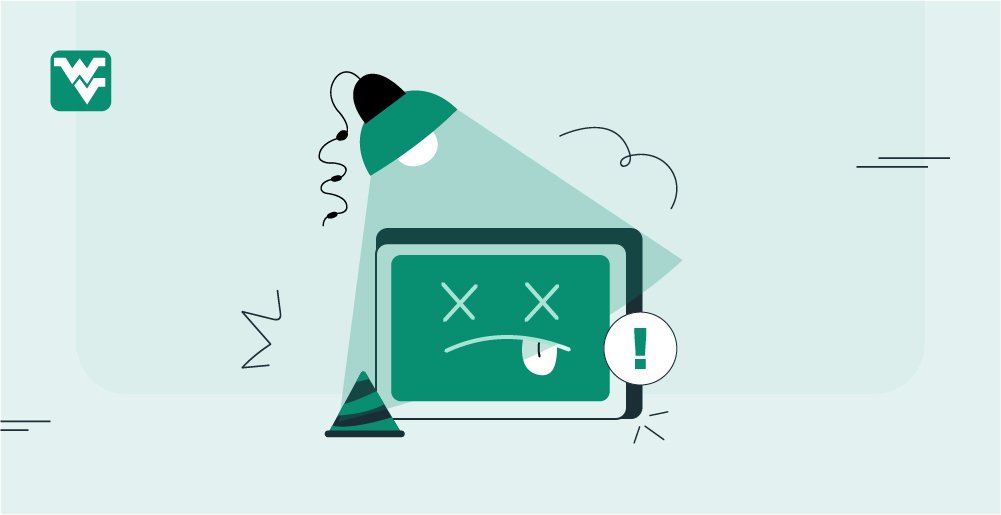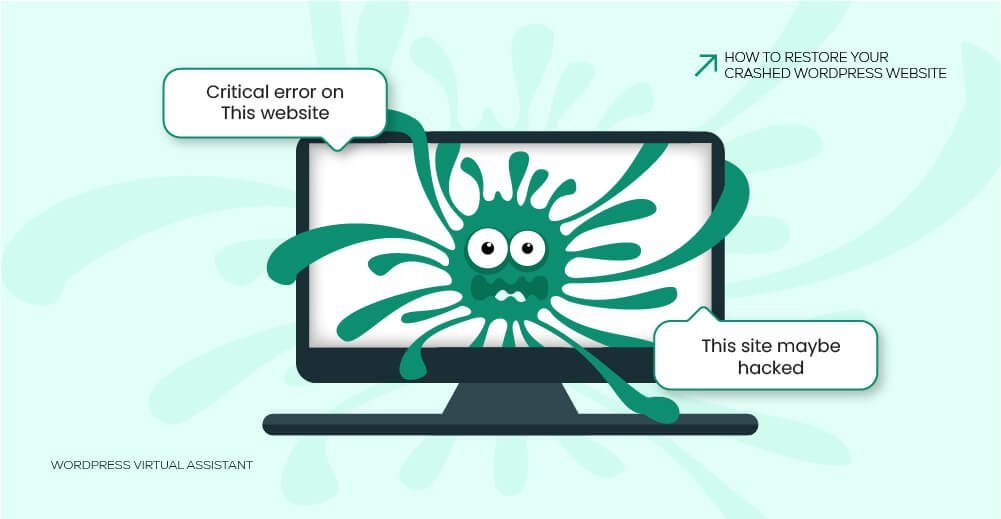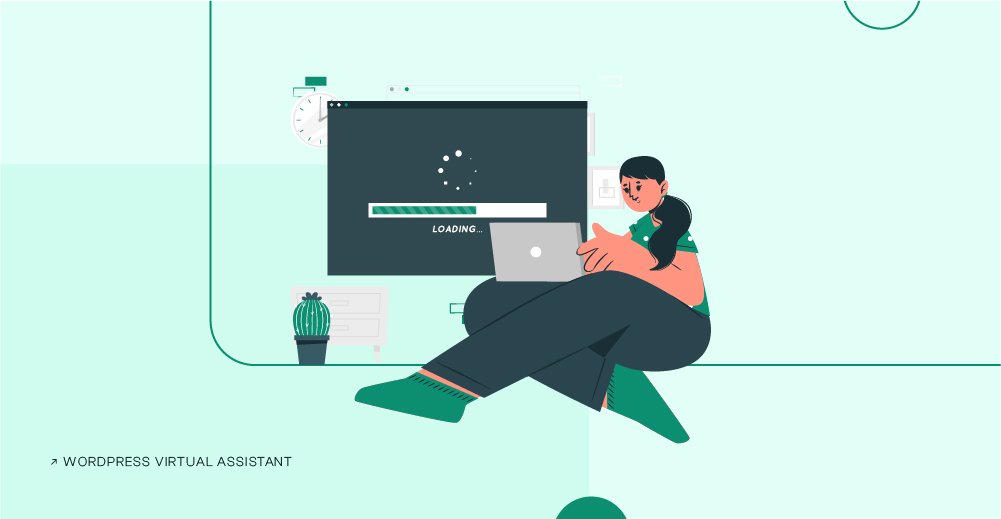Are you one of those site owners who are wondering, “Why is my wordpress site so slow”? A slow-loading site is like a never-ending Monday that not only frustrates visitors but also impacts your SEO, conversion rates, and overall user experience.
A study by Google found that 53% of mobile users leave a site that takes longer than 3 seconds to load. Therefore, if your visitors are met with spinning wheels, that means real money is slipping through your fingers.
As a WordPress agency that has optimized over 1,100+ websites, we’ve seen it all: bloated plugins, messy themes, oversized images, poor caching setups, and more. And in this post, we’re going to share our hands-on experience, not just theory.
Whether you’re managing a blog or running a full eCommerce store, these insights will help you spot what’s dragging your site down and how to fix it.
Whether you’re managing a blog or running a full eCommerce store, these insights will help you spot what’s dragging your site down and how to fix it.
Most Common Causes of a Slow WordPress Site
- Unreliable Web Hosting
- Too Many Plugins (or Bad Ones)
- Bad Theme Choice
- No Caching in Place
- Oversized or Unoptimized Images
- Messy or Bloated CSS & JavaScript
- Too Many Ads or Pop-Ups
- HTTP/2 Not Enabled
- Not Using a CDN (Content Delivery Network)
- Bloated Database
- Too Many External Scripts & Embedded Content
- Too Many or Heavy Web Fonts
- Redirect chains or broken links
- No Regular Site Maintenance
1. Unreliable Web Hosting
IMPACT: High
If your WordPress site still feels sluggish even after doing all the right optimizations, your web hosting might be holding you back. A poor hosting environment can quietly sabotage your site’s speed, user experience, and even your SEO rankings.
Think of hosting as the engine of your website. If it’s weak or outdated, no amount of performance tweaks can fully fix the issue. Many people start with cheap shared hosting because it’s affordable, but it often comes with hidden trade-offs.

You’re sharing space with hundreds of other websites, so if one of them gets a traffic spike, your site can slow down too.
Slow server response times (also called Time to First Byte or TTFB) are another common issue, and they can seriously hurt your Core Web Vitals. Outdated technologies, such as older PHP versions or the lack of HTTP/2, exacerbate the problem.
Limited resources like low RAM and CPU power can’t handle traffic surges, and if there’s no built-in caching or CDN, WordPress has to work overtime to load every page.
The Fix:
- Upgrade to managed WordPress hosting or a scalable cloud hosting plan.
- Select a reputable hosting provider that offers reliable uptime, comprehensive support, and essential components for optimal site performance.
We’ve listed the top 5 WordPress hosting providers that we use and recommend to our clients.
- WP Engine: Managed WordPress hosting with advanced caching, auto-updates, and developer tools. It’s perfect for focusing on content while experts handle performance, security, and scalability.
- SiteGround: Top-tier support and advanced features like SuperCacher and daily backups—ideal for users who value reliability and hands-on customer service.
- Bluehost: Official WordPress pick for beginners—easy setup, low cost, and reliable performance.
- Kinsta: Google Cloud for fast speeds and scalability—ideal for high-traffic or complex sites needing premium managed hosting and top-tier security.
- DreamHost: Affordable managed WordPress hosting with advanced caching, developer-friendly tools, and a 97-day money-back guarantee great for developers who value transparency and open-source support.
2. Too Many Plugins (or Bad Ones)
IMPACT: High
WordPress is known for flexibility. Its adaptability allows you to achieve anything with design and functionality by adding plugins or themes.
However, each plugin you add has the potential to load scripts, stylesheets, and assets. This results in an increase in HTTP requests every time a page is loaded.
You end up with added queries and data entries to your WordPress database, which leads to database bloat. Some plugins also run background processes such as scheduled scans, auto-updates, or logging activities, if not properly coded it eventually hurts your site performance, including front-end delays, slow admin dashboard, and so on.
The Fix:
- Start by auditing your current plugin setup and removing the ones you no longer use.
- Avoid overlapping functionalities and opt for multipurpose plugins that solve broader problems.
- Always install reputable plugins with mature code and frequent updates.
- Use tools like Query Monitor to identify which plugins are consuming more resources.
- Avoid installing plugins for minor features.
- Expertly plan your website’s scalability and consult with your developer to incorporate new features.
- Keep an eye on plugin updates.
3. Bad Theme Choice
IMPACT: High
A poorly chosen WordPress theme can slow down your website, even if your plugins and hosting are optimized.
We’ve seen many cases where site owners pick free or low-quality themes filled with heavy JavaScript, jQuery animations, and unoptimized CSS. This bloated code increases page size, slows loading times, and can cause crawl issues.
Multipurpose themes are just as harmful, as they are often packed with unused features that still load unnecessary files (until your site requires them).
In my opinion, a poor theme choice often triggers a cycle of poor decisions, such as adding extra plugins to address missing features or layout issues, which can lead to even slower performance and increased instability over time.

The Fix:
- Choose well-coded, performance-focused themes.
- Only select themes with regular updates, a solid support community, and compatibility with modern WordPress practices.
- Avoid themes that load dozens of features you won’t use (multipurpose).
- Download themes only from the official WordPress repository or trusted developers.
- Use tools like GTmetrix, PageSpeed Insights, or Lighthouse to test the theme’s speed before going live.

4. No Caching in Place
IMPACT: High
Caching is an effective technique for optimizing speed on WordPress sites. When you miss out on caching policy, your server has to fetch data from the database, process PHP scripts, and generate the page from scratch.
This slows down the load time and excessively consumes server resources, especially under heavy traffic.

The Fix:
- Check if caching is active by running your site through PageSpeed Insights or reviewing your installed plugins.
- Implement an effective caching policy tailored to your website’s needs with the right cache plugin, such as WP Rocket or W3 Total Cache.
- Regularly clear WordPress cache depending upon how often you update your site. Here’s a detailed guide on how to clear WordPress cache.
5. Oversized or Unoptimized Images
IMPACT: High
Images are often the heaviest elements on your webpage. When you upload unoptimized or oversized images to the media gallery, they drastically increase page size and load time.
“You don’t have to upload a 4000px-wide image when only 800px is needed.”
By doing this, you’re forcing the browser to download more data than necassary, especially on mobile and shared resources.
This wastes your server bandwidth and delays page rendering, resulting in slower page loads, poor Core Web Vitals (CWV), higher bounce rates, and lower search rankings.
The Fix:
- Don’t upload heavy images; use only the dimensions needed.
- Apply lossless or lossy compression using tools like ShortPixel or TinyJPG.
- Don’t rely on CSS to resize images.
- Serve images in next-gen formats like WebP or AVIF.
- Deliver images via CDN.

6. Messy or Bloated CSS & JavaScript
IMPACT: High
Excessive or unminified CSS/JS slows down everything on your WordPress websites.
Unoptimized or poorly written CSS and JS files block the browser from displaying content quickly.
Plugins and themes load extra styles and scripts that your site doesn’t use. Moreover, each CSS or JS file adds an HTTP request, wasting your server’s resources and consuming your crawl budget as well.
We’ve recently seen several cases where poorly managed CSS and JavaScript caused serious crawling issues. One of our clients came to us with a problem: their pages weren’t getting indexed, even though they followed good SEO practices. After digging in, we discovered the issue was massive, bloated CSS and complex design elements that led to an oversized DOM (Document Object Model). Because of this, Google focused more on crawling the bulky CSS files rather than the actual HTML content (you want indexed).

The Fix:
- Use plugins like WP Rocket to minify and optimize CSS and JS files.
- Reduce HTTP requests by combining multiple CSS or JS files into one.
- Use plugins like Perfmatters to strip away unused CSS and JS.
- Load only the CSS needed for above-the-fold content first, improving initial render speed.
- Every plugin may add its own CSS/JS. Deactivate and delete those you don’t use.

7. Too Many Ads or Pop-Ups
IMPACT: Medium
Overloading your webpages with ads and pop-ups can seriously hurt your site’s performance. These ads often load from third-party services, which add to HTTP requests and delay how fast your content appears.
It doesn’t mean we’re discouraging ads. However, the primary culprits are overuse and mismanagement. Overusing ads also causes elements to jump around, which hurts the user experience (UX) and Core Web Vitals, both of which are ranking factors according to Google.
Effectively managing ad loading and numbers can save your server resources, improve page rank, and enhance user experience.
The Fix:
- Keeping ad count low ensures your content stays the focus and feels more trustworthy.
- Avoid placing ads in the middle of key content or in areas that interrupt the reading experience.
- Use static ad placements over script-heavy options.
- Lazy loading delays loading ad content until it’s needed (e.g., when it enters the viewport). This helps reduce initial load time and improves Core Web Vitals.
8. HTTP/2 Not Enabled
IMPACT: Medium
HTTP/2 is a modern web protocol that speeds up your site by allowing multiple files, like images, CSS, and JavaScript, to load simultaneously over a single connection. It reduces load times, improves performance, and enhances user experience.
If your server is still running on HTTP/1.1, your site may be loading slower than it should, especially on pages with many resources.
The Fix:
- Choose a host that supports HTTP/2.
- HTTP/2 only works over HTTPS, so ensure you’ve an SSL certificate. Alternatively, use WP Encrypt as a free option.
- Use browser developer tools (under the network tab) to verify HTTP/2 is enabled. Look under the “Protocol” column:
- If it says
h3 → ✅ HTTP/2 is enabled. - If it says
http/1.1→ ❌ HTTP/2 is not enabled.

9. Not Using a CDN (Content Delivery Network)
IMPACT: High
CDN stores copies of your website’s static files (like images, CSS, and JavaScript) on servers around the world. When someone visits your site, those files are delivered from the server closest to them. This reduces latency and speeds up loading time.
Without a CDN, all users (regardless of their location) must load your site from a single server, which can cause delays and negatively impact performance.
The Fix:
- Use a reliable CDN:
- Cloudflare (free and easy to set up)
- BunnyCDN (fast and affordable)
- KeyCDN, StackPath, or Amazon CloudFront (for advanced users)
- Utilize cache plugins like WP Rocket to connect a CDN with your WordPress website.
- Ensure that the CDN caches everything that doesn’t change but still impacts site performance.
10. Bloated Database
IMPACT: Medium
Your WordPress database stores everything—from content and settings to plugin data. However, over time, it accumulates clutter, including old revisions, spam comments, and leftover data from removed plugins.
This can slow down your site, especially on large or WooCommerce-based installs. Cleaning a bloated database can improve performance by up to 30% in some cases.
The Fix:
- Use a database optimization plugin like WP-Optimize or WP Rocket to safely remove revisions, spam, transients, and overhead with one click.
- Set weekly or monthly cleanups to keep the database lean and fast.
- If you’re technically inclined, you can manually clean or optimize tables directly from your hosting control panel.

11. Too Many External Scripts & Embedded Content
IMPACT: High
Why It Affects Performance: Adds delays due to waiting on third-party servers (YouTube, social feeds, etc.)
Loading too many scripts from third-party services like Google Ads, YouTube videos, Facebook widgets, or chat tools can slow down your website. These scripts often load from external servers, which adds extra HTTP requests and delays page rendering.
Embedded content like YouTube videos, social media posts, and maps can also increase load time, especially if placed high on the page.
The Fix:
- Limit the number of third-party scripts and only use essential ones.
- Use lazy loading for embedded content to load it only when needed.
- Host critical scripts locally when possible to reduce dependency on external servers.
- Defer or delay non-critical scripts using tools like WP Rocket or Perfmatters.

12. Too Many or Heavy Web Fonts
IMPACT: Medium
Web fonts can enhance your site’s design, but if not optimized properly, they can slow down your loading speed and negatively impact Core Web Vitals.
The goal is to reduce the number of font files your site loads and make sure key fonts are prioritized using preloading.
The Fix:
- Limit font families and weights to only what you use.
- Use a Plugin (Easy & Recommended) – Install a plugin like OMGF to host Google Fonts locally and preload them with a few clicks—no coding needed.
- Manually Preload Fonts (For Developers) – Add this code to your site’s <head>:
<link rel=”preload” href=”fonts/font-name.woff2″ as=”font” type=”font/woff2″ crossorigin=”anonymous”>You can insert it via your child theme’s header.php, the Insert Headers and Footers plugin, or the wp_head hook using functions.php.
13. Redirect Chains or Broken Links
IMPACT: Medium
Redirect chains happen when one URL redirects to another, which then redirects again, causing unnecessary delays and slowing down your page load. Too many redirects in a row can confuse browsers and users, and even prevent content from loading properly.
Broken links, on the other hand, lead to missing pages (404 errors), which hurt user experience and SEO. They make your site look unprofessional and can stop search engines from properly crawling your content.
The Fix:
- Scan your site using tools like Screaming Frog, Ahrefs, or Broken Link Checker to find redirect chains and dead links.
- Fix or remove broken links that lead to missing or outdated pages.
- Replace redirect chains with a single direct link to the final destination.
- Use 301 redirects wisely avoid stacking them unless necessary.
14. No Regular Site Maintenance
IMPACT: High
Regular maintenance of your WordPress site is the ultimate solution to all the above problems. Over time, unused plugins, outdated themes, bloated databases, and broken links can accumulate, negatively impacting performance, security, and user experience.
Many performance issues go unnoticed without routine checkups. Even well-built WordPress sites require ongoing maintenance to remain fast and reliable.
The Fix:
- Update WordPress, themes, and plugins regularly to ensure compatibility and security.
- Clean your database to remove old revisions, spam, and transients.
- Manage 404 errors and promptly apply 301 redirects.
How do I know what’s slowing down my site?
You can use the following tools to analyze your WordPress website speed:
- GTMetrix: Breaks down load times, file sizes, and highlights slow-loading resources.
- Google PageSpeed Insights: Gives speed scores and suggestions for mobile and desktop.
- Pingdom: Offers a visual waterfall chart to pinpoint bottlenecks.
Simply enter your website URL into the tool, and it will automatically scan your site, providing a report with performance insights and improvement tips.

Boost Your Site Performance with WP Virtual
It’s time to act now! Page speed is one of the top factors that impact your website’s success. If your site is still slow, you’re falling behind, and so are your results.
As a business owner, your goal should be a load time of under 3 seconds. For eCommerce sites, the competition is even tougher. Since SEO is all about staying ahead of others, speed gives you the edge you need to outrank and outperform your competitors.
WP Virtual offers a full spectrum of WordPress virtual assistant services—from performance optimization, plugin audits, and theme cleanup to content updates, backups, SEO, and ongoing maintenance.
Whether you’re running a blog, a business website, or an eCommerce store, we help you focus on growth while we handle the technical side.
🤝 Let’s grow together!







